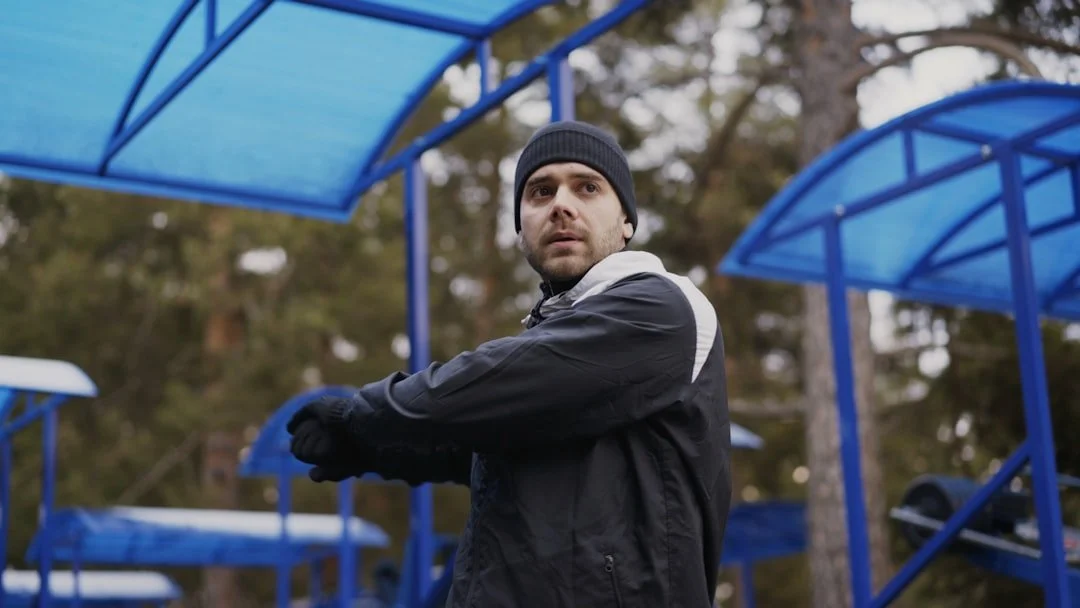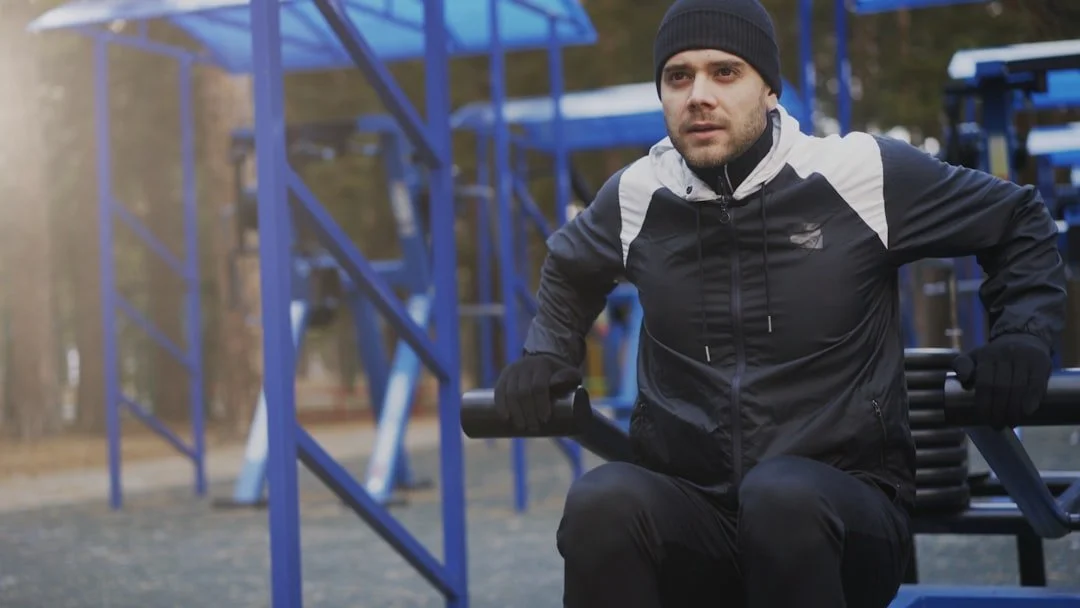The $0 Personal Trainer: Complete Park Workout Plan Using Denver's Running Loops
By Get Back Physical Therapy • 2025-10-23
I watched a guy at Wash Park last Tuesday finish a full circuit—squats on a bench, pull-ups on the monkey bars, sprints on the grass. Then he cooled down with a lap on the 2.6-mile loop. His form was solid. Progressive overload built in. Zero equipment besides a pull-up bar that's been there since 1985.
When he finished, I asked if he had a trainer. "Nope," he said. "Just been following a program I built using the park."
That's the thing about Denver's parks—they're not just green space. They're pre-built training facilities with running loops, elevation changes, benches, bars, and grass. You just need to know how to program them.
Denver's parks: 280+ free training facilities hiding in plain sight
Why Most Park Workouts Fail
Here's the problem with random park exercises: no progression. People show up, do some push-ups, maybe a few squats, call it done. That's not training—that's just moving around.
Real training requires progressive overload, periodization, and a plan that adapts as you get stronger. The kind of stuff personal trainers charge $100/hour to design.
Research from the Journal of Strength and Conditioning Research found that structured bodyweight programs produce similar strength gains to gym-based resistance training—with one key requirement: the programming has to actually progress week to week.[^1]
Denver's Best Parks with Exact 1-Mile Loops
Not all parks are created equal for training. You want measured distances and solid infrastructure. Here are the winners:
Washington Park Loop Options
Inner crushed gravel loop: 2.6 miles (partial sections measure out to 1-mile markers)
Smith Lake loop: approximately 1 mile
Equipment: Multiple benches, monkey bars near Smith Lake, hills for sprints
City Park
Duck Lake loop: 1.1 miles (close enough for our purposes)
Equipment: Dedicated outdoor fitness station near the Museum, countless benches, open grass fields
Bonus: Elevation gain on the west side
Cheesman Park
Pavilion perimeter: approximately 1 mile when combining the main paths
Equipment: Benches throughout, natural hills, less crowded than Wash Park
Advantage: Hills add resistance without equipment
Berkeley Lake Park
Lake loop: exactly 1 mile
Equipment: Pull-up bars, benches, open grass
Why it's great: Perfect pacing marker for interval work
!Park path with trees One measured mile. Infinite training possibilities.
The 8-Week Personal Trainer-Level Program
This isn't a random collection of exercises. It's a structured program with progressive overload, deload weeks, and periodization—exactly what you'd pay for.
Important Safety Notes
Before starting, understand the difference between good discomfort and bad pain:
Normal (keep going):
Muscle burning during the last few reps
Mild muscle soreness 24-48 hours after workouts
Breathing hard during cardio intervals
Slight fatigue during the session
Stop immediately (not normal):
Sharp, stabbing pain in joints (knees, shoulders, wrists, back)
Pain that gets worse as you continue
Numbness or tingling in extremities
Dizziness or chest pain
Modifications for common limitations:
Knee issues: Skip jump squats and reduce Bulgarian split squat depth. Focus on step-ups and bridges.
Shoulder issues: Start with wall push-ups and avoid overhead movements until cleared by a professional.
Lower back sensitivity: Reduce plank hold times and focus on core control before adding intensity.
Wrist pain during push-ups: Use fists on the ground or do push-ups on bench (incline position).
If you're returning to exercise after 6+ months off or managing any chronic condition, start with Weeks 1-2 and repeat them until they feel comfortable before progressing.
Program Structure
Frequency: 3 days per week (Mon/Wed/Fri or Tue/Thu/Sat) Duration: 45-60 minutes per session Equipment needed: None. Just the park.
Weeks 1-2: Foundation Phase
Goal: Build movement quality and work capacity
Session Format: 1. Warm-up: 5-minute easy jog (half-mile) 2. Dynamic mobility: 5 minutes (10 arm circles each direction, 10 leg swings per leg front/back and side-to-side, 10 bodyweight squats, 5 inchworms) 3. Strength circuit (3 rounds): - Bench step-ups: 10 per leg - Incline push-ups (hands on bench): 12 reps - Bodyweight squats: 15 reps - Plank hold: 30 seconds - Rest: 90 seconds between rounds 4. Conditioning: 1-mile easy pace 5. Cool-down: 5-minute walk
Notes: Focus on form. If you can't complete all reps with good technique, that's your starting point. No shame in that—it's data.
Weeks 3-4: Volume Phase
Goal: Increase total work capacity
Session Format: 1. Warm-up: 5-minute easy jog 2. Dynamic mobility: 5 minutes (same as Week 1-2) 3. Strength circuit (4 rounds): - Bulgarian split squats (back foot on bench): 8 per leg - Push-ups (on ground or incline): 10 reps - Walking lunges: 20 total steps - Bench dips: 10 reps - Mountain climbers: 20 total - Rest: 60 seconds between rounds 4. Conditioning: 1-mile moderate pace (aim for 8:30-9:30 at altitude) 5. Cool-down: 5-minute walk + light stretching
Progression marker: You should feel challenged but able to complete all rounds. If it's too easy, reduce rest periods by 15 seconds.
Weeks 5-6: Intensity Phase
Goal: Build strength and power
Session Format: 1. Warm-up: 5-minute easy jog + dynamic drills 2. Strength circuit (4 rounds): - Jump squats: 8 reps - Decline push-ups (feet on bench): 8 reps - Single-leg Romanian deadlifts: 10 per leg - Pull-ups or inverted rows (on monkey bars): max reps - Plank to downward dog: 10 reps - Rest: 2 minutes between rounds 3. Interval work: 6 x 1-minute hard efforts with 2-minute easy jog recovery 4. Cool-down: 10-minute easy jog
Notes: Altitude hits harder during intensity phases. Your "hard" effort should be conversational-but-challenging, not gasping-for-air.
Week 7: Deload Week
Goal: Recovery and adaptation
Cut volume by 40%. Do 3 rounds instead of 4. Replace hard intervals with easy 1-mile loops. Your body builds strength during recovery, not during the beating.
The American College of Sports Medicine found that programmed deload weeks increase long-term strength gains by 12-18% compared to continuous training.[^2]
Week 8: Performance Phase
Goal: Test improvements
Session Format: 1. Warm-up: 10 minutes 2. Benchmark circuit (record your results): - Max push-ups in 2 minutes - Max split squats per leg in 90 seconds - Max pull-ups (or max time inverted row hold) - 1-mile time trial 3. Finisher: 4 x 30-second all-out sprints on grass 4. Cool-down: 15 minutes
Compare to Week 1: You should see measurable improvement. If not, you either pushed too hard (inadequate recovery) or not hard enough (insufficient stimulus).
The Complete Movement Library
Every park exercise falls into one of five patterns. Master these, and you've got everything.
Push Variations
Beginner: Wall push-ups, incline push-ups
Intermediate: Standard push-ups, wide/narrow grip
Advanced: Decline push-ups, archer push-ups, explosive push-ups
Pull Variations
Beginner: Inverted rows under monkey bars (feet on ground)
Intermediate: Pull-up negatives (jump up, slow down)
Advanced: Full pull-ups, L-sit pull-ups
Squat Variations
Beginner: Bench-assisted squats, box squats
Intermediate: Bodyweight squats, split squats
Advanced: Pistol squats, jump squats
Hinge Variations
Beginner: Bench hip thrusts, single-leg bridges
Intermediate: Single-leg Romanian deadlifts
Advanced: Nordic curls (hook feet under bench)
Core/Carry
All levels: Planks, dead bugs, bear crawls, suitcase carries (fill a backpack with water bottles)
How to Progress Without Weights
Personal trainers manipulate five variables to create progression. You can do the same:
1. Volume: More sets or reps 2. Intensity: Harder variations (push-up → decline push-up) 3. Tempo: Slower eccentric (3-second lowering phase) 4. Rest: Shorter rest periods 5. Complexity: Combine movements (squat to lunge to jump)
Example progression for push-ups over 8 weeks:
Week 1: 3x12 incline push-ups, 90-sec rest
Week 3: 4x12 incline push-ups, 60-sec rest
Week 5: 4x10 regular push-ups, 60-sec rest
Week 7: 3x8 regular push-ups (deload)
Week 8: 4x8 decline push-ups, 45-sec rest
That's textbook progressive overload.
Progressive overload doesn't require a gym membership—just a plan
The Altitude Advantage Nobody Talks About
Training at 5,280 feet is like wearing a weighted vest for your cardiovascular system. Your body adapts by producing more red blood cells and building additional capillaries—the tiny blood vessels that deliver oxygen to muscles.
University of Colorado research shows that people who train consistently at altitude develop approximately 15% more mitochondrial density than sea-level counterparts.[^3] That's the cellular machinery that produces energy.
So when you travel to sea level for that work conference, you're operating with a built-in advantage. Your body can deliver more oxygen to working muscles because it's adapted to doing more with less.
What Actually Matters: Consistency Over Perfection
I've worked with hundreds of people trying to build a consistent training routine. The ones who succeed don't have perfect programs. They have sustainable ones.
The best program is the one you'll actually do three times per week for the next six months. Park workouts win because:
Low friction: No driving to a gym, no membership fee, no checking if the squat rack is available
Environmental benefits: Research shows outdoor exercise improves mood 25% more than indoor training[^4]
Flexible timing: Parks are open sunrise to sunset, every day
Dogs allowed: Turns out bringing your dog increases workout adherence by 30%[^4]
When to Actually Hire a Personal Trainer
This program works. But it's not for everyone. Consider working with a professional if:
You're recovering from surgery or managing chronic pain
You have specific performance goals (competitive sports)
You need external accountability
Your form breaks down and you can't self-correct
At Get Back PT, we design programs like this for clients, then teach them to run it independently. The goal isn't dependence—it's empowerment.
The Bottom Line
Personal trainers aren't selling secrets. They're selling structure, accountability, and expertise. But if you understand basic programming principles and can honestly assess your effort, you can build the structure yourself.
Denver's parks are already set up for this. Measured distances. Natural resistance from hills and altitude. Benches and bars. You just needed the program.
Now you have it.
---
[^1]: Kotarsky, C.J., et al. (2018). "Effect of Progressive Calisthenic Push-up Training on Muscle Strength and Thickness." Journal of Strength and Conditioning Research, 32(3), 651-659.
[^2]: American College of Sports Medicine. (2019). "ACSM's Guidelines for Exercise Testing and Prescription." 10th Edition. Wolters Kluwer.
[^3]: University of Colorado Boulder. (2021). "High Altitude Exercise Research." Department of Integrative Physiology.
[^4]: Thompson Coon, J., et al. (2011). "Does Participating in Physical Activity in Outdoor Natural Environments Have a Greater Effect on Physical and Mental Wellbeing than Physical Activity Indoors?" Environmental Science & Technology, 45(5), 1761-1772.
---
Need help building a program that matches your current fitness level and goals? Get Back Physical Therapy specializes in sustainable training design for Denver's active population. We'll meet you where you are and build you up from there.


